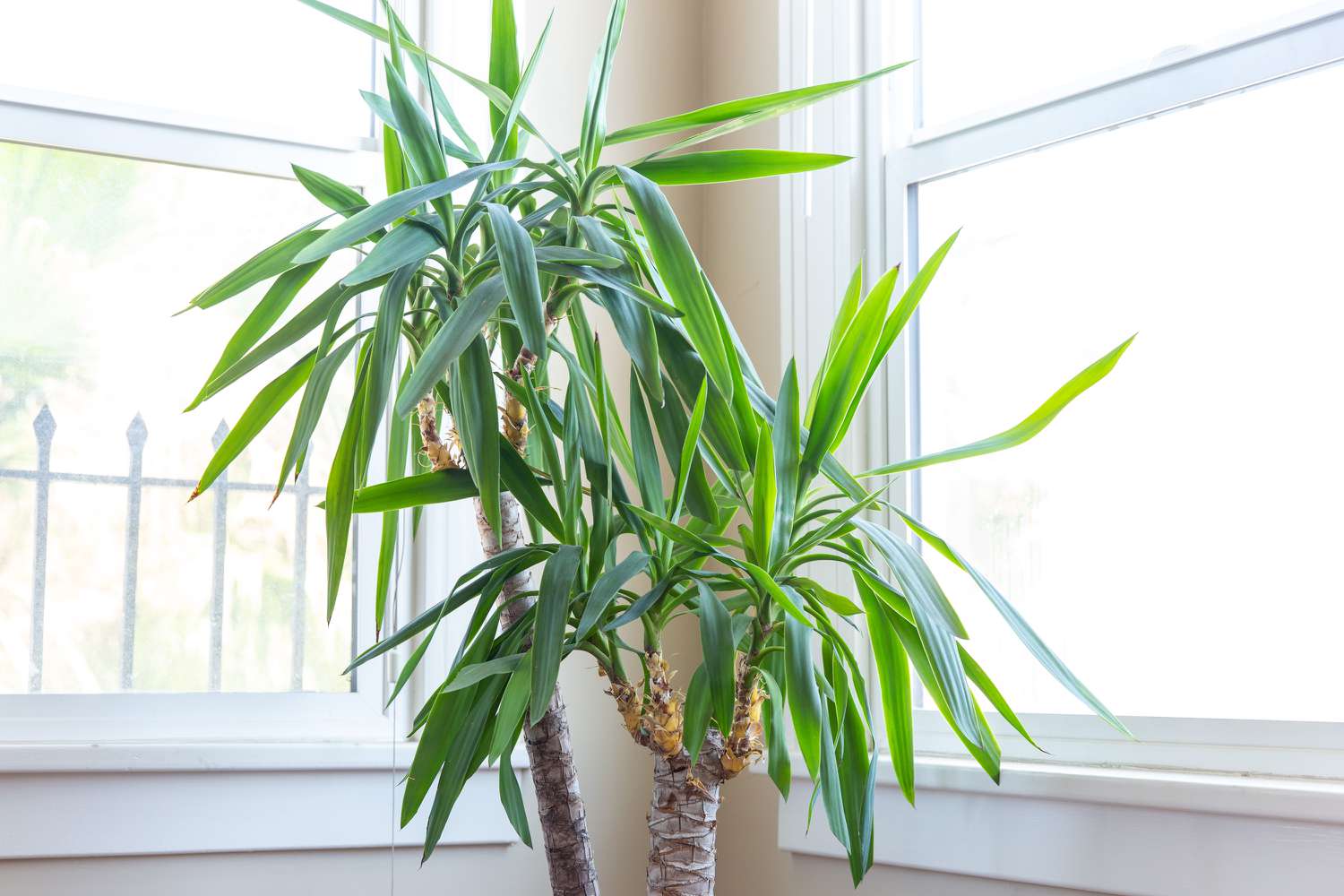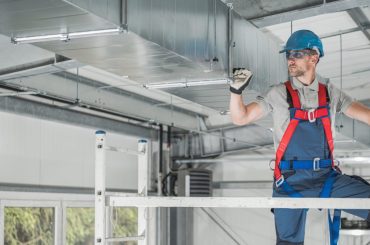Table of Contents
Are your yucca’s leaves drooping or wilting? It could be happening because of any of the six reasons that we will discuss below. Yuccas require minimal care to thrive, but they are susceptible to some conditions if not cared for properly. Drooping leaves indicate they need good care and a plan to save them.
We have investigated the main reasons that cause yucca to droop leaves and will provide adequate solutions and instructions to identify damage to make them green and spiky again.
1. Insufficient or Excessive Amount of Sunlight
There are many reasons why yucca plant leaves start to droop, but sunlight is the most common one. Like any other plant, yucca also needs sunlight for Photosynthesis to create carbon dioxide and flourish. If it doesn’t get enough sunlight, it won’t grow well.
Exposure to extreme sunlight for extended periods can also make it sag, drying the potting water and weakening the plant. It is better to understand what is happening with your yucca to revive it before it is gone.
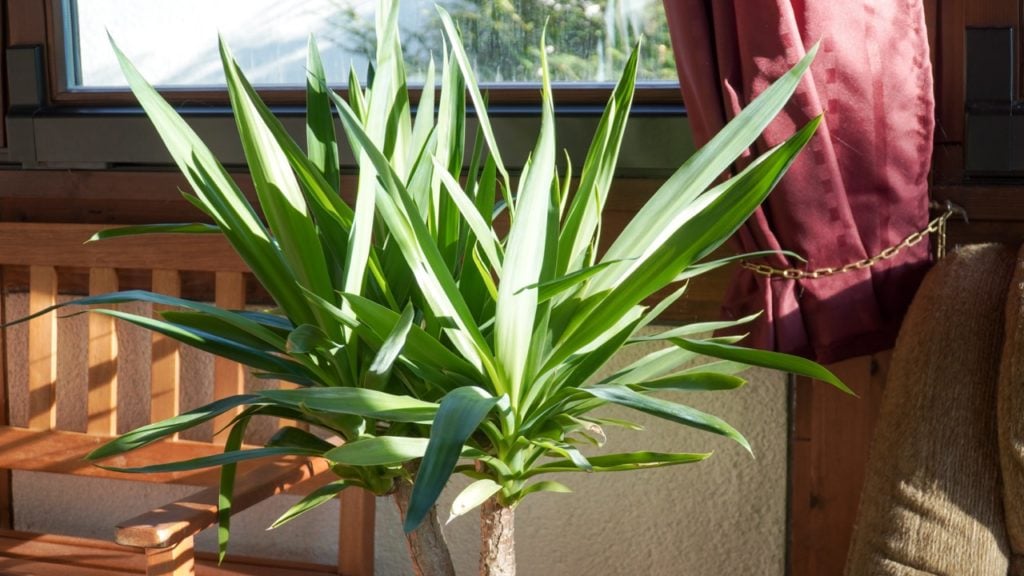
Solutions and instructions
- When you put your plant outside for around 6 hours, it will neither dry nor lose the energy to flourish.
- Keep it near a window or a place where sunlight is accessible. And look for the proper angle where it gets only enough light so that it doesn’t get sunburned.
- Check your plant’s tips or leaves for white spots, which could indicate sun-related problems.
- You can place it outside as you go office for some hours a day and take it to the room as you get back home if you are a job goer.
- Place your sun-loving-yucca in a south or west-facing patio, or if inside, make sure curtains do not hinder direct sunlight from letting it flourish well.
- The plant can also stay healthy if placed under a shady tree.
2. Underwatering
This condition arrives when the plant is not getting sufficient water. They are drought-hardy plants, meaning they can survive dry and hot conditions, but still, they will die if we do not water them appropriately. Yuccas grown in smaller pots often face this problem and die out eventually.
Yucca is a succulent plant that stores water in its plumpish leaves to use when there is a scarcity. It can rot like other succulent plants if it doesn’t receive enough water, and the leaves will turn crispy.
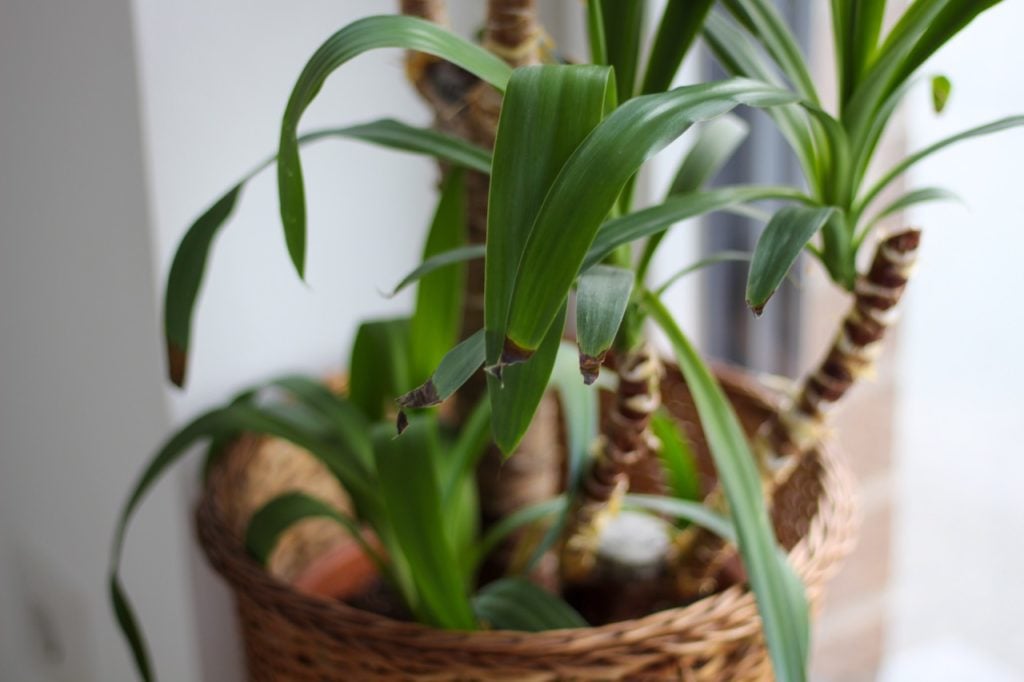
Solutions
- Test the soil’s water level and make a watering plan to revive your yucca. You can use a popsicle stick to check the moisture levels. Just stick it 2 inches below into the potting soil to check. If it comes out clean, then the plant needs water. Take the plant out of its pot and place it in an open area and the water across its roots’ surface with a hose so it can absorb enough water.
- To decrease your effort, you can place it in a self-watering pot but tip out the extra water so that the roots do not stay wet for longer, which can damage the yucca.
- You don’t need to buy a new self-watering pot, but investing in a good watering can be an excellent idea.
- Make a watering plan and stick to it if you want your yucca’s leaves drooping problem solved.
3. Overwatered
When you overwater the plant, it continuously loses its essential nutrients, such as nitrogen and iron. This loss then turns the plant leaves yellow and droop. Another problem that yucca faces with excessive watering is that its root suffers from fungal growth and rot. In this situation, the plant cannot absorb vital nutrients to develop. Excess watering will wash organic matter by compaction of the soil. Once this happens, the soil will lose its ability to hold water and plant will droop and die.
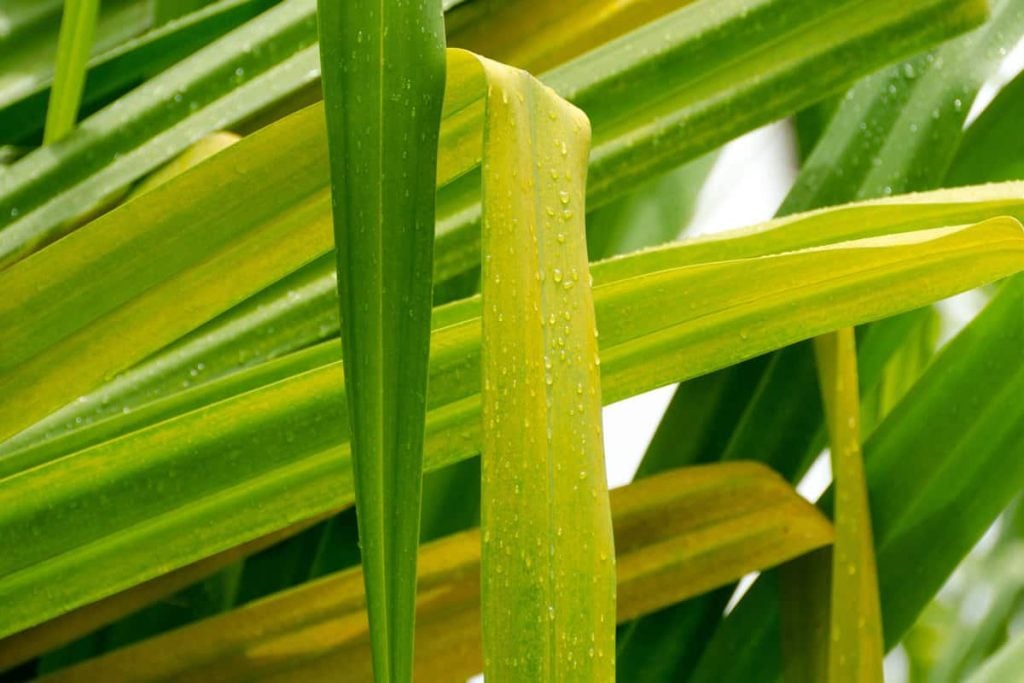
Solutions
- It would be best to stop watering entirely for a few weeks and let the potting soil dry.
- Repotting the yucca will also be beneficial if it has root rot. Choose a bit larger pot in this situation. You can learn about pots to make a viable decision. A black pot may keep yucca warm in winter and might help it dry quicker.
- Choose a succulent-friendly potting mix to let it have more air to get healthier and grow well.
- Improve watering by drip irrigating, which is doable for plants like yucca if you want to grow it in a container.
- Use a container that has at least one or two drainage holes. To make it more effective, add loose and well-drained potting soil.
- Water the plant only when soil up to two inches becomes dry.
- You can also moisten leaves to avoid brown leaf tips.
4. Damaged by Cold Weather
Some varieties of yucca will easily survive winter, while some can be devastated by a bit of exposure to frost. The yucca leaves are drooping because they may have been exposed to a cold snap for a few hours. The yucca can not bear temperatures under 7 degrees C and only can be overwintered indoors. No matter how hardy your yucca plant type is, it will still be unable to survive outside. If you keep the plant inside and close all doors and windows, still, it will be at risk of overwatering and root rot because the soil will take more time to dry.
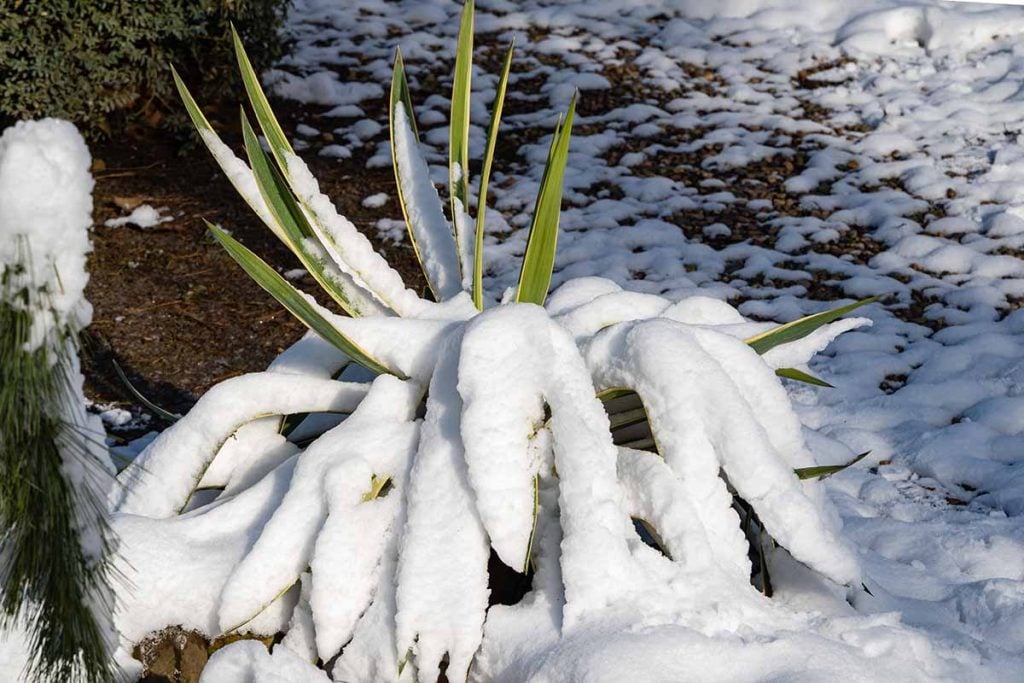
Solutions
- It is better to keep it in a black coloured pot or put a heating pad under it to help it dry quickly.
- It is better not to use fertiliser in winter because it will go dormant and not grow in cold temperatures.
- Keep up with the weather and put them undercover or in the greenhouse if there is a weather forecast about a cold snap.
- Use horticultural fleece to protect hardier plants outside.
- Use a protective sheet before covering it with plastic in winter.
- Snow protection is another thing that concerns every yucca owner.
- Call for multiple blankets to keep the yucca temperatures high at night.
- Protecting them from frost is crucial; otherwise, their leaves will turn bright and black and may even affect the stem; That is why trimming the affected leaves as winter goes away is better.
5. Excessive Fertilise
Overuse of fertiliser is why your yucca leaves are drooping. When it is just a young plant, it can grow sufficiently with the help of using fertiliser, but once it has developed, you should decrease the amount. Time-released (given in little amount over time) application will be a charm for the yucca plant. Fertiliser in bulk will kill the plant by weakening the stems and leaves. Phosphorus in abundance will make the plant more susceptible to diseases with brittle stems.
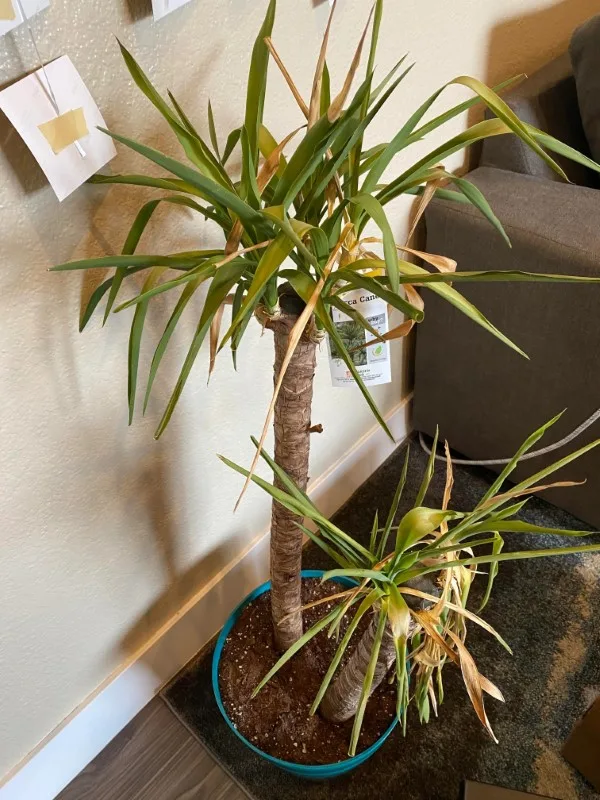
Solutions
- A handful of chicken manure once a year will be enough because it breaks down in about 3 to 6 months providing yucca with one of their favourite foods; nitrogen.
- If your yucca has this problem, ensure you wash the extra amount of nutrients from the soil by putting it in a tray and watering it heavily.
- Shift your yucca to a potting mix with less fertiliser.
- Never fertilise yucca in winter.
- You can choose between a succulent fertiliser or any indoor plant fertiliser for your yucca’s growth.
- If your plant is in a dire state of health, you can prefer using a small amount of fertiliser once in two to three months and no more than that.
- If you have not fertilised the soil in a while, then you should do it three times this year (in early spring, late spring, and mid-summer).
6. Pest
Pests could be the last possible reason your yucca plant is drooping leaves. This could become a severe threat to the plant if not treated well. Infestation of spider mites can be deadly for this plant because these small reddish-white creatures eat up the plant’s sap. However, there are possible solutions if the number of pests is small. Aphids, scales and mealybugs are also sap-eater insects, and they also suck the petioles ( a stalk that attaches leaves with the stem) of yucca, which causes its leaves to droop.
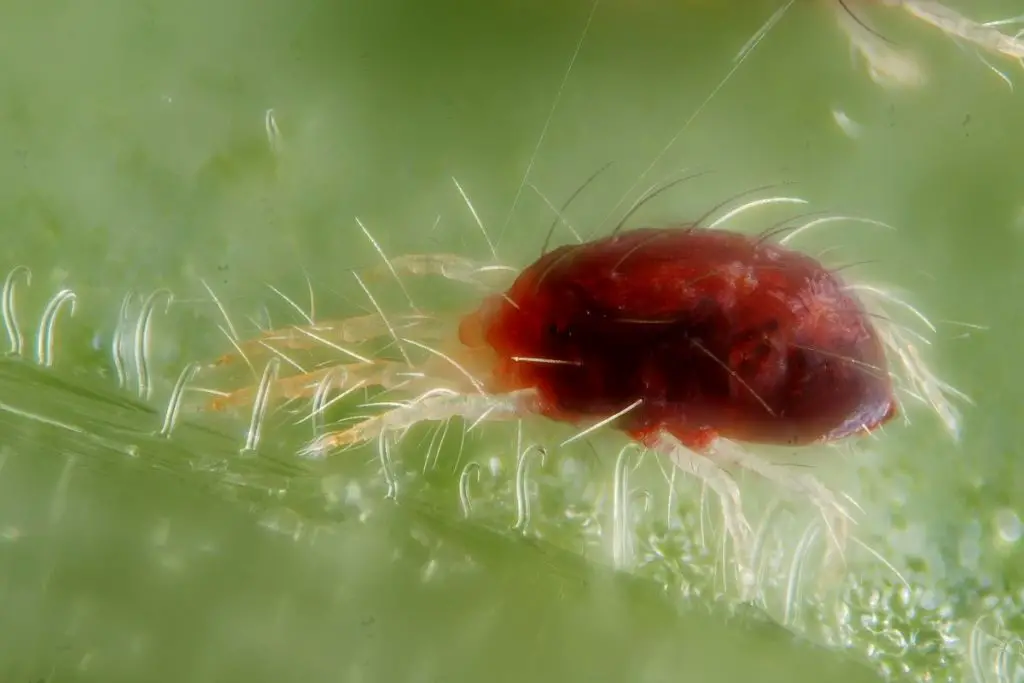
Solutions
- A few sprays of a horticultural oil spray are the best way to eliminate pests.
- Acaricide spray will work against the mites. However, pesticides are the last option if the pets do not disappear.
- Shower the plant for a few days and apply neem oil spray to treat it without pesticides.
- If you have discovered your plant has diseases or pests, you can prefer treating it with fungicides or insecticides.
- Do not expose yucca to extreme temperatures or direct sunlight when the plant is under pest attack, or it will wilt.
- You can maintain your yucca’s health and drooping leaves problem by being vigilant, checking for any signs of infestation, and immediately applying solutions (sprays).
- Snout weevil is also a pest that lays eggs in the base of the trunk, a serious concern because it is not easy to eradicate. So, prevention is better than cure.
- Keep your plant healthy and water it properly.
Conclusion
Numerous circumstances can give birth to yucca leaves’ drooping problem. Sunlight-related problems are the most common but can be easily tackled. Your yucca plant also needs a balanced amount of watering. One reason that needs your attention is keeping the plant healthy so it can survive harsh conditions (in cases) such as pest attacks or frost exposure. Plants should not receive enough fertilisation because it will be more dangerous. One of the most important things is to take preventive measures to save yucca from spider mites by staying vigilant.
We encourage you to brace yourself to save your yucca against harsh weather and pesticides with provided suggestions. We hope you revive the plant and make it healthy again.

